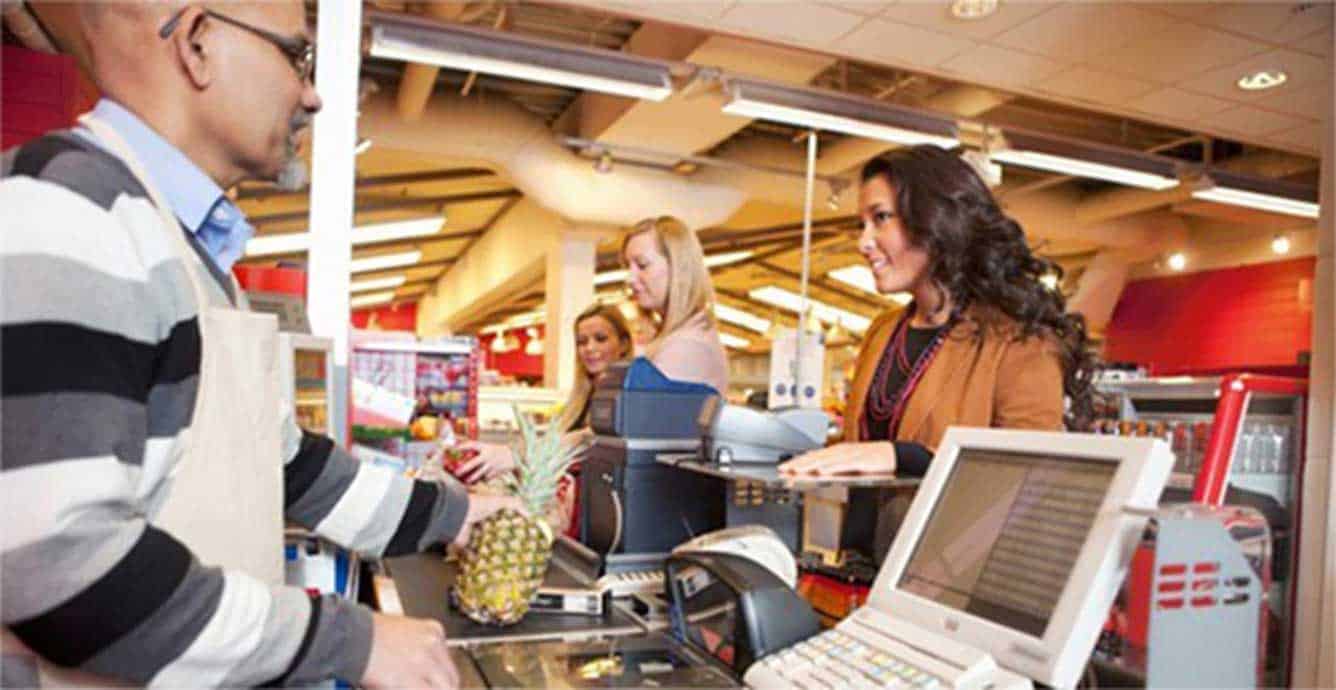3 minute read
Perception Versus Efficiency: Checkout Queuing Theory

Shopping is full of many decisions from the moment you walk in the door. Do you need a hand basket or a cart? What merchandise provides the best value? Should you buy two because there is a promotion? One of the most daunting decisions can be which register lane to enter at checkout. Those managing retail stores struggle with these same questions, especially when it comes to how to design their point of sale interaction.
There are many factors that go into this decision, but I think everyone has the same motive in mind – to spend as little time waiting in line as possible. This is a goal that customers, store employees and store management share. Of course, part of the checkout process depends on the quantity of items that need processed, but there are also fixed activities that must occur for each customer, regardless of order size. The cashier must greet the customer and process a form of payment. There are other activities that may happen – asking for a rewards card, requesting ID for restricted items, additional bagging for fragile items, processing coupons, and so forth. All these activities depend on both, the cashier and customer. What is the cashier’s skill and effort? Does the cashier have all the necessary items at the work place? Is the customer prepared with necessary coupons, rewards card and payment? Does the customer need to sign to verify the payment? With all this complexity, how can a retailer optimize their design and standard operating procedures around the checkout process to best serve everyone?
For retailers the solution may lie in the field of queuing theory. Queueing theory is the study of queues, or waiting lines. Queueing models can be created to study queue lengths and wait times. Queueing theory states that a combined queue with multiple servers, a single queue that leads to multiple checkouts, is mathematically the most efficient method. A single queue is commonly seen at airports, banks, DMVs, and self-checkouts. Although a single queue appears much longer, the lines moves 3 times faster. When a single line stops due to a delay from the cashier or customer, the entire line stops, where a single queue can keep moving. For example, if there are three lines in a store, unpredictable delays occur randomly at different registers. Therefore, you only have a one-in-three chance of being in the fastest moving line.
Despite it being mathematically proven, people have a natural aversion to a single queue due to the perception of it taking longer because it visually appears longer. If you are the third person in lane 1 and see the fourth person in lane 2 move through the checkout lane faster, you feel you picked the wrong lane, whether the delay is created from the cashier or customers ahead of you.
A single queue also improves the cashiers’ unutilized time. In separate, parallel queues, when a cashier is finished processing the last customer in their lane, their time becomes unutilized while the cashier in the next lane is still processing customers. In a single queue, the cashiers’ time is fully utilized and there are minimal delays between customers. Customers are not being moved around as one cashier becomes available, or another cashier needs to close a lane for a break or end of shift.
Now, there are factors that must be taken into consideration to receive the full benefits of a single queue, multiple server model, especially in a retail environment. It is imperative that there is a method to queue customers from the single queue to the multiple servers before that server has finished processing their current customer. Otherwise, this creates a delay between every customer. Some retailers utilizing a single queue with multiple servers today use a variety of tactics to accomplish this.
One solution used to address this issue includes using a system of lights to signal to the next in queue to approach the register (a light in one color signals to the next in the queue a customer is being served while a light of a different color signals to the next customer in the queue to approach the register). Another solution is to deploy an employee to direct customers to approach each server as they are completing service for the current customer. There are other solutions as well, but the important point is that when deploying a single queue and multiple server configuration the retailer needs to have a clearly defined strategy to educate and manage customer interaction to minimize delay time.
It may not work for every type of retailer, depending on various attributes such as customer volume, average item size, type of product, available square footage to reconfigure the retail space and many other. However, despite perceptions and the way it has always been done there could be value in piloting a single queue with multiple servers in retail settings. While piloting a single queue, retailers can measure KPIs focused around queuing, such as average wait times and average queue lengths. Although it is a departure from the norm, single queues can benefit everyone, from improved employee utilization to decreased wait time for customers.



